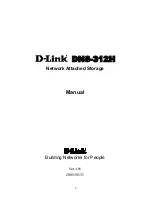
preparatIon
9
© TESVOLT We reserve the right to make technical changes! RD.TI.026.E.ENG_Installation_Manual_TSHV70OD_v.A.01 Last revised
07/2020
3 PREPARATION
3.1 TOOLS REQUIRED:
TOOL
USE
5 – 30 Nm torque wrench with 10 and 13 mm sockets, long
8 mm hexagon socket screwdriver (recommended minimum
length: 120 mm in total)
For tightening the grounding connections and the AC and DC
connecting cables to the SMA STPS 60, for example
TX 25/30 Torx screwdriver
For fastening the floor outlet cover
PH 3 cross-head screwdriver
Fastening the battery modules and APU HV1000-S in the
battery cabinet
35 mm² to 50 mm² crimping tool
For crimping the wire end ferrules for the DC connecting cable
Multimeter (min. 1000 V
DC
)
Measuring the power supply and battery voltages (up to
1000 V
DC
) and testing the battery modules’ state of charge
Crane (> 400 kg capacity)
For transporting the battery cabinet and installing the cabinet
in its final installation site.
3.2 MATERIALS TO BE PROVIDED BY THE CUSTOMER
DESCRIPTION
USE
Grounding rods or ring grounding
For equipotential bonding
e.g. concrete, crushed stone, gravel, ....
To create the substrate and for filling the pedestal.
Hollow pipes and cables for laying below ground level.
AC supply line (5x 35 to 50 mm
2
), grid cabling, DC wiring for
master/slave (2x 35 to 50 mm
2
)
Outdoor distribution enclosure with provision for installation
space
For Janitza power quality analyser, transformer measurement,
peripheral equipment and BatBreaker for master slave system
3.3 TRANSPORT TO THE END CUSTOMER
Transport regulations and safety information
All the requirements set down in the German Ordinance on the Transport of Dangerous Goods by
Road, Rail and Inland Waterways (GGVSEB) and the European Agreement Concerning the International
Carriage of Dangerous Goods by Road (ADR) must be adhered to.
•
The battery modules may only be transported by the manufacturer or by a forwarding agency
engaged by the manufacturer. Should transport on public roads nevertheless be necessary, this
may only be carried out by personnel who have received appropriate training and instruction. This
instruction is to be documented and carried out periodically.
•
Smoking is prohibited in the vehicle during the transport journey, and also in the immediate vicinity
during loading and unloading.
•
Two tested Class D metal fire extinguishers (minimum capacity: 2 kg) and equipment for dangerous
goods in accordance with the ADR are to be carried in the vehicle.
•
The freight carrier is prohibited from opening the outer packaging of the battery module.
DANGER! Risk of injury
due to improper transport in a vehicle.
Improper transport and/or inadequate transport locks can cause the load to slide or topple over, lead-
ing to injuries. Position the cabinet vertically and in such a way that it cannot slide around in the vehi-
cle, and use securing straps to prevent it from toppling over and sliding.
CAUTION! Risk of injury due to the battery cabinet toppling over during transport.
Do not tilt the cabinet.
The cabinet weighs approx. 400 kg and may topple over if tilted excessively,
causing injuries or material damage.










































